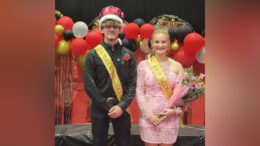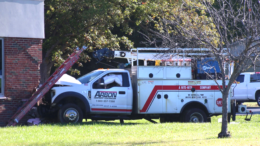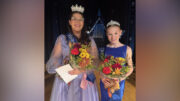The stunning color of the first crocus flowers fills our hearts with joy. The cheery blooms mark the start of the garden season.
But the only way to get them is by planting the bulbs in the fall. Why talk about that job now? Because this is the time to begin studying the landscape as bulbs appear and write down where they are and — more importantly — where they aren’t.
I know it might seem a little crazy to be thinking about fall planting so early in spring, but I’ve learned over the years how important it is for someone like me who lives for spring bulbs and especially daffodil season. There’s no way to remember where the planting spots are after another long and wonderful garden season. Once those daffodils appear, there’s no turning back. All the spring bulbs are ephemeral, staying in bloom only a short time and that might be why they are so treasured.

Crocus are one of the first flowers of the season to bloom. Noting where more bulbs are needed now, will allow gardeners to know where to plant in the fall.
I’ll tell anyone who will listen to plant bulbs at the end of the season. For me it’s a tradition going back three decades. This isn’t instant gratification, as the payoff happens now as the show begins. I can’t imagine not getting bulbs in the ground, but unfortunately it seems to be an annual ritual that is falling out of favor with gardeners. Nurseries are carrying fewer varieties each season, which is a shame.
My love of bulbs goes back to childhood. My grandparents and other family members are buried at Lake View Cemetery in Cleveland. I visited their graves as a 7-year-old and turned to see Daffodil Hill. Started in the 1940s, the spectacular display of thousands of yellow flowers had me spellbound upon first sight.
My mother talked about that hill for years and when I moved to my current garden 20 years ago, I pledged to make own Daffodil Hill in memory of my grandparents. I put in as many as I can each year in a woodland setting.
To do that, I use a seven-inch Power Planter Bulb Auger, and it’s the best I’ve ever used. An auger is just a giant drill bit that fits on any electric or battery-powered drill. I use a powerful 20-volt battery model which allows me to add 100 bulbs in about 20 minutes. Before my garden chores take over, I’m recording where I’ll be planting in the fall. It’s something that’s easy to do now as the ground is barren except for the emerging bulbs.
Some of the earliest blooms in my garden come from snowdrops, which have flowered as early as Jan. 15. Depending on the winter though, they could bloom as late as March, followed by crocus, then glory of snow, puschkinia, daffodils, hyacinths, tulips and alliums. There are a wide variety of different flower shapes, sizes and colors to choose from, and it’s fun to plan ahead. Studying the garden now will give you a good idea about what colors and height of the blossoms would fit with what’s blooming.
I’m out in the garden now taking notes and pictures so that I know what and where I’ll be planting. The tulips are the only flowers that aren’t reliably perennial. I treat them as annuals and grow them in a fenced-in vegetable garden as they are a favorite food of deer.
The puschkinia is a flower I just discovered two seasons ago. The blue and white flowers are stunning, tough and deer resistant, and form a colony after just a few seasons. Look through catalogs like Brent and Becky’s Bulbs and John Scheepers Beauty From Bulbs to see all the different types of plants that will thrive for decades in the garden.

Crocus are one of the first flowers of the season to bloom. Noting where more bulbs are needed now, will allow gardeners to know where to plant in the fall. The flowers are one of the only food sources for pollinators in the spring.
The early flowers are one of the only food sources for pollinators, so planting patches of crocus, snowdrops and others will help them get through spring.
My mother gardened sparingly over the years and there was a little patch of yellow crocus flowers near the front door of our rural home. When I would come home from school and see those blooms, I knew the school year was coming to an end. When I cleaned that house out, I was doing pretty well until I turned and saw those luminescent flowers. They brought back a flood of childhood memories. Each fall I’ll plant some, and when they flower, I’m reminded of my mother and growing up in simpler times, spending the summers running barefoot through the fields.
I’m grinning now as I look over my crocus flowers in bloom. It’s the same smile present when I’m on my hands and knees pushing bulbs into the cool, soft earth each fall anticipating the start of another garden season.
Doug Oster is editor of Everybody Gardens, a website operated by 535Media, LLC. Reach him at (412) 965-3278 or doster@535mediallc.com. See other stories, videos, blogs, tips and more at EverybodyGardens.com.











































